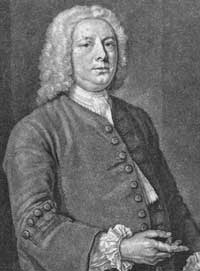|
The Hobby Horse
''The Hobby Horse'' was a quarterly Victorian periodical in England published by the Century Guild of Artists. The magazine ran from 1884 to 1894 and spanned a total of seven volumes and 28 issues. It featured various articles not only on arts and design but other subjects including literature and social issues as well. It also featured artwork such as sketches, plates, photographs, engravings, wood cuts, lithographs and reproduced paintings. ''The Hobby Horse'' started publication in 1884 as the first high quality magazine committed solely to the visual arts. ''The Century Guild Hobby Horse'' "was one of the last (and in many ways the ultimate) versions of the literature and art journal, a genre born with the Pre-Raphaelite Germ in 1850. Unlike its successors, ''The Yellow Book'' and ''The Savoy'', ''The Hobby Horse'' was not solely committed to an elite aestheticism. Its pages were filled with essays arguing for recognition of the vital social role of art and artists." ''The ... [...More Info...] [...Related Items...] OR: [Wikipedia] [Google] [Baidu] |
Herbert Horne
Herbert Percy Horne (1864 in London – 1916 in Florence, Italy) was an English poet, architect, typographer and designer, art historian and antiquarian. He was an associate of the Rhymers' Club in London. He edited the magazines ''The Century Guild Hobby Horse'' and '' The Hobby Horse'' for the Century Guild of Artists, which he founded with fellow architect Arthur Heygate Mackmurdo in 1882. Horne was closely associated with Arthur Symons and Selwyn Image and their mistress Muriel (Edith) Broadbent. Later in life he settled in Florence, restoring a Renaissance palazzo into which he eventually moved. He first visited Italy in 1889 and kept an illustrated journal of his travels and art and architectural research. His monograph on Sandro Botticelli from 1908 is still recognised as of exceptional quality and thoroughness. Death and commemoration He donated his collection, of arts and handicrafts of the 14th and 15th centuries, to create the '' Museo della Fondazione Horne'' ... [...More Info...] [...Related Items...] OR: [Wikipedia] [Google] [Baidu] |
Defunct Magazines Published In The United Kingdom
{{Disambiguation ...
Defunct (no longer in use or active) may refer to: * ''Defunct'' (video game), 2014 * Zombie process or defunct process, in Unix-like operating systems See also * * :Former entities * End-of-life product * Obsolescence Obsolescence is the state of being which occurs when an object, service, or practice is no longer maintained or required even though it may still be in good working order. It usually happens when something that is more efficient or less risky r ... [...More Info...] [...Related Items...] OR: [Wikipedia] [Google] [Baidu] |
Visual Arts Magazines Published In The United Kingdom
The visual system comprises the sensory organ (the eye) and parts of the central nervous system (the retina containing photoreceptor cells, the optic nerve, the optic tract and the visual cortex) which gives organisms the sense of sight (the ability to detect and process visible light) as well as enabling the formation of several non-image photo response functions. It detects and interprets information from the optical spectrum perceptible to that species to "build a representation" of the surrounding environment. The visual system carries out a number of complex tasks, including the reception of light and the formation of monocular neural representations, colour vision, the neural mechanisms underlying stereopsis and assessment of distances to and between objects, the identification of a particular object of interest, motion perception, the analysis and integration of visual information, pattern recognition, accurate motor coordination under visual guidance, and more. The ... [...More Info...] [...Related Items...] OR: [Wikipedia] [Google] [Baidu] |
Art Nouveau Magazines
Art is a diverse range of human activity, and resulting product, that involves creative or imaginative talent expressive of technical proficiency, beauty, emotional power, or conceptual ideas. There is no generally agreed definition of what constitutes art, and its interpretation has varied greatly throughout history and across cultures. In the Western tradition, the three classical branches of visual art are painting, sculpture, and architecture. Theatre, dance, and other performing arts, as well as literature, music, film and other media such as interactive media, are included in a broader definition of the arts. Until the 17th century, ''art'' referred to any skill or mastery and was not differentiated from crafts or sciences. In modern usage after the 17th century, where aesthetic considerations are paramount, the fine arts are separated and distinguished from acquired skills in general, such as the decorative or applied arts. The nature of art and related concepts, such ... [...More Info...] [...Related Items...] OR: [Wikipedia] [Google] [Baidu] |
The Savoy (periodical)
''The Savoy'' was a magazine of literature, art, and criticism published in eight numbers from January to December 1896 in London. It featured work by authors such as W. B. Yeats, Max Beerbohm, Joseph Conrad, Aubrey Beardsley and . Only eight issues of the magazine were published: two quarterly (January, April) and six monthly (July-December). The publisher was Leonard Smithers, a controversial friend of Oscar Wilde who was also known as a pornographer. Among other publications by Smithers were rare erotic works and unique items such as books bound in human skin. History ''The Savoy'' was founded as a competitor to ''The Yellow Book'' and to provide work for members of the Decadent movement as it began to decline with the imprisonment of Oscar Wilde. The magazine was started by Leonard Smithers, writer Arthur Symons (The Symbolist Movement In Literature) and artist Aubrey Beardsley. It is considered a little magazine, and was described as "a manifesto in revolt against Victori ... [...More Info...] [...Related Items...] OR: [Wikipedia] [Google] [Baidu] |
The Yellow Book
''The Yellow Book'' was a British quarterly literary periodical that was published in London from 1894 to 1897. It was published at The Bodley Head Publishing House by Elkin Mathews and John Lane, and later by John Lane alone, and edited by the American Henry Harland. The periodical was priced at 5 shillings (£, ) and lent its name to the "Yellow Nineties", referring to the decade of its operation. Significance ''The Yellow Book'' was a leading journal of the British 1890s; to some degree associated with aestheticism and decadence, the magazine contained a wide range of literary and artistic genres, poetry, short stories, essays, book illustrations, portraits, and reproductions of paintings. Aubrey Beardsley was its first art editor, and he has been credited with the idea of the yellow cover, with its association with illicit French fiction of the period. He obtained works by such artists as Charles Conder, William Rothenstein, John Singer Sargent, Walter Sickert, and Philip ... [...More Info...] [...Related Items...] OR: [Wikipedia] [Google] [Baidu] |
The Work Of Art In The Age Of Mechanical Reproduction
"The Work of Art in the Age of Mechanical Reproduction" (1935), by Walter Benjamin, is an essay of cultural criticism which proposes and explains that mechanical reproduction devalues the ''aura'' (uniqueness) of an ''objet d'art''. That in the age of mechanical reproduction and the absence of traditional and ritualistic value, the production of art would be inherently based upon the praxis of politics. Written during the Nazi régime (1933–1945) in Germany, Benjamin's essay presents a theory of art that is "useful for the formulation of revolutionary demands in the politics of art" in a mass-culture society. The subject and themes of Benjamin's essay: the ''aura'' of a work of art; the artistic authenticity of the artefact; its cultural authority; and the aestheticization of politics for the production of art, became resources for research in the fields of art history and architectural theory, cultural studies and media theory. The original essay, "The Work of Art in the Ag ... [...More Info...] [...Related Items...] OR: [Wikipedia] [Google] [Baidu] |
Caslon
Caslon is the name given to serif typefaces designed by William Caslon I (c. 1692–1766) in London, or inspired by his work. Caslon worked as an engraver of punches, the masters used to stamp the moulds or matrices used to cast metal type. He worked in the tradition of what is now called old-style serif letter design, that produced letters with a relatively organic structure resembling handwriting with a pen. Caslon established a tradition of engraving type in London, which previously had not been common, and was influenced by the imported Dutch Baroque typefaces that were popular in England at the time. His typefaces established a strong reputation for their quality and their attractive appearance, suitable for extended passages of text. The letterforms of Caslon's roman, or upright type include an "A" with a concave hollow at top left and a "G" without a downwards-pointing spur at bottom right. The sides of the "M" are straight. The "W" has three terminals at the top ... [...More Info...] [...Related Items...] OR: [Wikipedia] [Google] [Baidu] |
Kerning
In typography, kerning is the process of adjusting the spacing between Character (symbol), characters in a Typeface#Proportion, proportional font, usually to achieve a visually pleasing result. Kerning adjusts the space between individual letterforms, while Letter-spacing, tracking (letter-spacing) adjusts spacing uniformly over a range of characters. In a well-kerned font, the two-dimensional blank spaces between each pair of characters all have a visually similar area. The term "keming" is sometimes used informally to refer to poor kerning (the letters r and n placed too close together being easily mistaken for the letter m). The related term ''kern'' denotes a part of a type letter that overhangs the edge of the Movable type, type block. Metal typesetting The source of the word ''kern'' is from the French word , meaning "projecting angle, quill of a pen". The French term originated from the Latin , , meaning "hinge". In the days when all type was cast metal, the parts ... [...More Info...] [...Related Items...] OR: [Wikipedia] [Google] [Baidu] |
Typography
Typography is the art and technique of arranging type to make written language legible, readable and appealing when displayed. The arrangement of type involves selecting typefaces, point sizes, line lengths, line-spacing ( leading), and letter-spacing (tracking), as well as adjusting the space between pairs of letters (kerning). The term ''typography'' is also applied to the style, arrangement, and appearance of the letters, numbers, and symbols created by the process. Type design is a closely related craft, sometimes considered part of typography; most typographers do not design typefaces, and some type designers do not consider themselves typographers. Typography also may be used as an ornamental and decorative device, unrelated to the communication of information. Typography is the work of typesetters (also known as compositors), typographers, graphic designers, art directors, manga artists, comic book artists, and, now, anyone who arranges words, letters, numbers ... [...More Info...] [...Related Items...] OR: [Wikipedia] [Google] [Baidu] |
Lithography
Lithography () is a planographic method of printing originally based on the immiscibility of oil and water. The printing is from a stone (lithographic limestone) or a metal plate with a smooth surface. It was invented in 1796 by the German author and actor Alois Senefelder and was initially used mostly for musical scores and maps.Meggs, Philip B. A History of Graphic Design. (1998) John Wiley & Sons, Inc. p 146 Carter, Rob, Ben Day, Philip Meggs. Typographic Design: Form and Communication, Third Edition. (2002) John Wiley & Sons, Inc. p 11 Lithography can be used to print text or images onto paper or other suitable material. A lithograph is something printed by lithography, but this term is only used for fine art prints and some other, mostly older, types of printed matter, not for those made by modern commercial lithography. Originally, the image to be printed was drawn with a greasy substance, such as oil, fat, or wax onto the surface of a smooth and flat limestone plat ... [...More Info...] [...Related Items...] OR: [Wikipedia] [Google] [Baidu] |
.jpg)






.jpg)